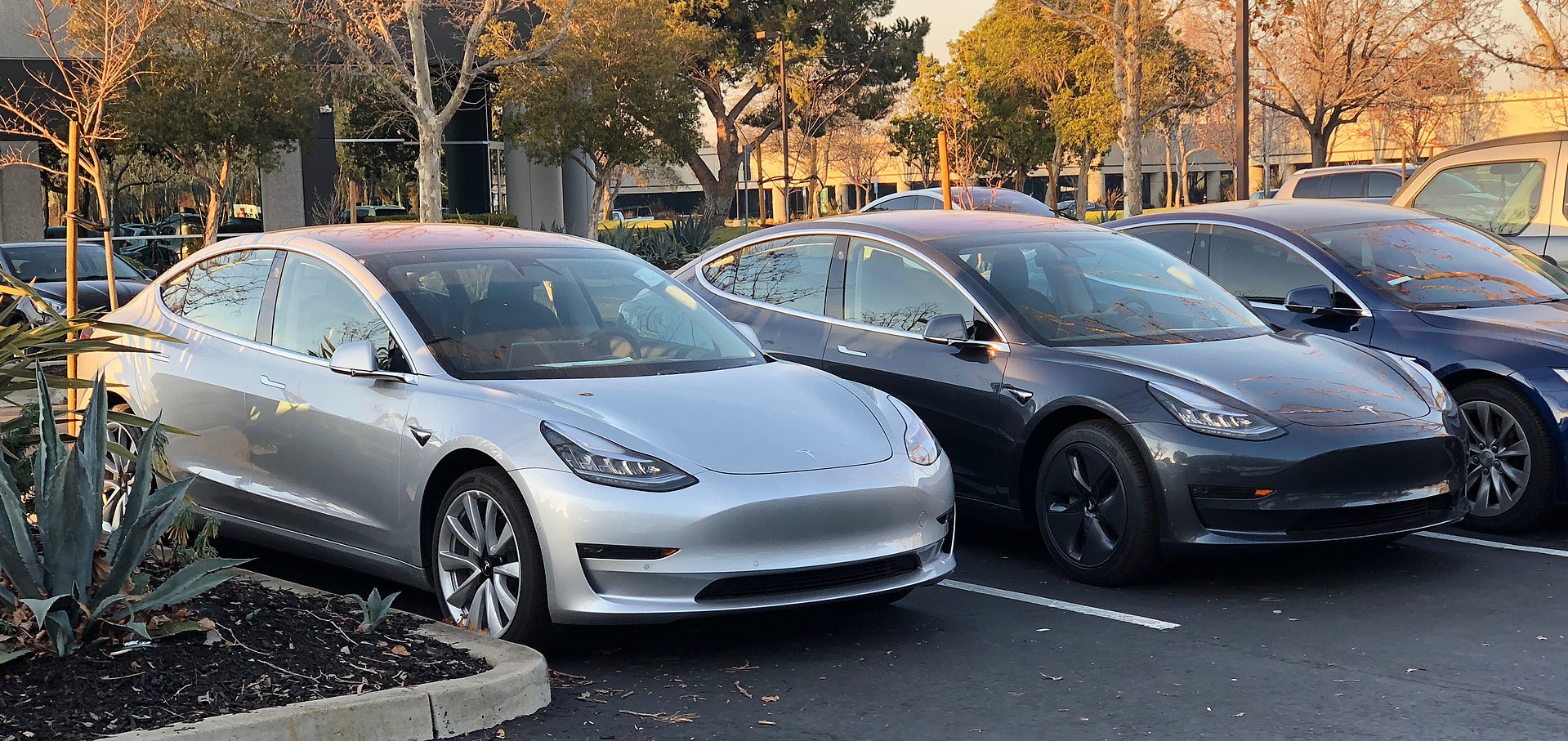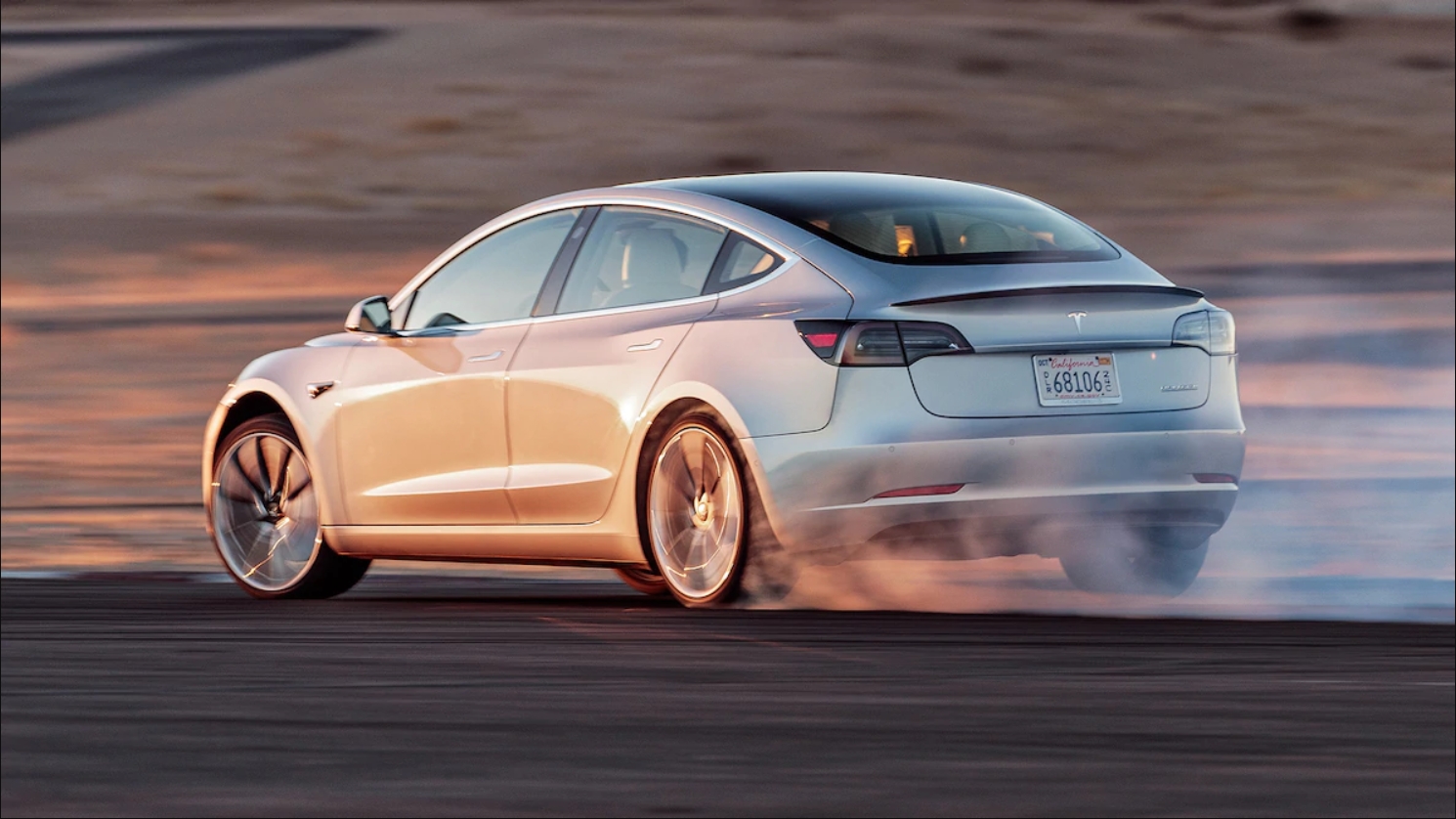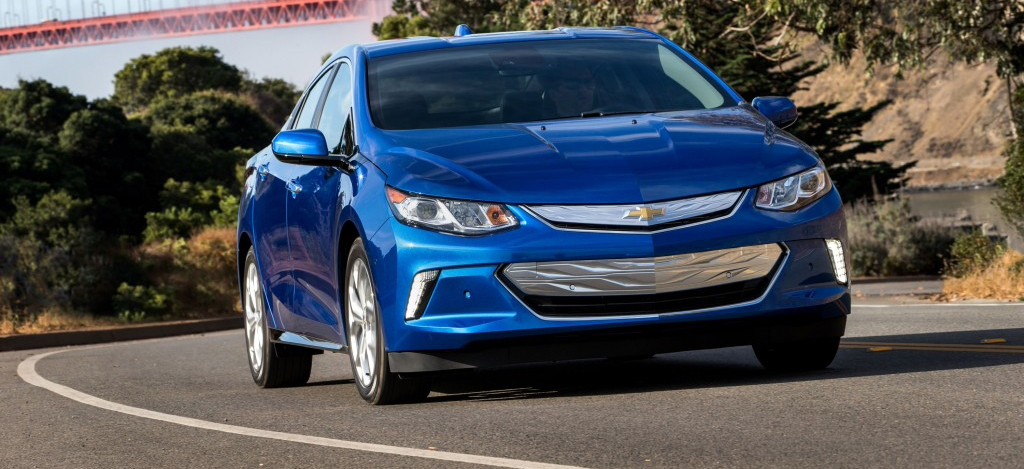

News
Tesla’s Model 3 and the death of plug-in hybrids: ‘Full electric is a much more elegant solution’
Tesla took a big bet when it decided to launch the Model 3. Being a vehicle designed for the mass market, the sheer scale of the sedan’s production was something that Tesla has not dealt with before. It took more time than expected and a trip through “production hell,” but the Model 3 has now been ramped, with Elon Musk noting that producing 5,000 of the vehicles per week is currently no big deal for Tesla.
The market’s reception to the Model 3 has been encouraging. The vehicle has been performing well in the United States, ranking among America’s best-selling passenger cars. In September alone, the Model 3 became the 4th best-selling car in the US based on sales volume. Based on revenue, the Model 3 was even more impressive, ranking first among passenger cars sold in the country. Tesla does not seem to be planning on pulling back from its Model 3 push either, as the electric carmaker has started rolling out exhibits of the vehicle to Europe and Asia this month.
Amidst the evident success of the Model 3 and Elon Musk’s high-stakes bet on the electric sedan, another class of vehicles has begun to show notable signs of a decline — the plug-in hybrids. Plug-in hybrid electric vehicles (PHEV) are equipped with both an electric motor and an internal combustion engine. Popular cars in this class include the Chevy Volt, with its all-electric range of up to 53 miles, and a total range of 420 miles with a full battery and a full tank of gas.

PHEVs have mostly served as the “gateway” vehicles for customers looking to make the jump to electric transportation. Being equipped with a gasoline engine, owners need not worry about any of the initial drawbacks of pure EVs, such as limited range. Plug-in Hybrid and Electric Vehicle Research Center director Gil Tal noted to Bloomberg that in a way, PHEVs are like the “training wheels” of the electric car movement. That said, Tal noted that as practical, capable EVs like the Model 3 emerge, consumers might simply skip PHEVs and adopt all-electric cars instead.
“A full electric (car) is a much more elegant solution. It’s very simple to build and very low maintenance. It’s just a much more simple story. Plug-in hybrids are just the training wheels in the industry’s preparation for electric cars,” Tal said.
The death of plug-in hybrid electric vehicles became more real recently, with GM announcing that it was closing several of its plants across the United States and Canada. Among these plants was GM’s oldest factory at Detroit-Hamtramck, which produces the Volt. In a later statement, GM confirmed that it would be discontinuing the production of the Volt, with the company focusing on developing all-electric cars like the Bolt EV instead.

GM has announced that it is discontinuing the production of the Chevy Volt. [Credit: Chevrolet]
In a way, the apparent death of the PHEV seemed to have been predicted by Elon Musk eight years ago. In a statement to the media during the opening ceremony of the Fremont factory, Musk likened PHEVs to amphibians during the process of evolution. And just like amphibians, Musk noted that the number of PHEVs would likely decrease as the market moves into the full-electric era.
“(PHEVs are) similar to an amphibian. In the transition from the oceans to land, initially, there were a lot of amphibians. Now there’s not that many amphibians. So the only reason you’d ever need that gasoline engine is if the battery pack does not have enough range, if the recharge times are really slow, and all those things will get solved. So there’s a medium-term role for a plug-in hybrid, but in our view, not a long-term role. I think there’s a role for plug-in hybrids today and there’s a role for electrics, but I think long-term, it all goes electric.”
The seemingly impending death of the plug-in hybrid is not just the result of electric cars like Tesla’s Model S, 3, and X. Earlier this year, a Forbes report earlier this year noted that the efforts (or lack thereof) of manufacturers such as GM are partly to blame for the decline of PHEVs. Inasmuch as the Volt was warmly received by owners and well-reviewed by critics, for example, the vehicle remained a rare sight among GM’s dealerships across the United States. GM’s TV advertising campaigns have not featured the Volt, or its all-electric sibling, the Bolt EV, either.
That said, GM appears to be taking its EV initiative seriously this time around. Earlier this month, for one, VP of global strategy Mike Ableson boldly declared during a press conference that GM is looking to “lead the industry in EVs sometime in the next decade or so.” The next years will determine if these words will be true.
Elon Musk
Tesla reveals it is using AI to make factories more sustainable: here’s how
Tesla is using AI in its Gigafactory Nevada factory to improve HVAC efficiency.

Tesla has revealed in its Extended Impact Report for 2024 that it is using Artificial Intelligence (AI) to enable its factories to be more sustainable. One example it used was its achievement of managing “the majority of the HVAC infrastructure at Gigafactory Nevada is now AI-controlled” last year.
In a commitment to becoming more efficient and making its production as eco-friendly as possible, Tesla has been working for years to find solutions to reduce energy consumption in its factories.
For example, in 2023, Tesla implemented optimization controls in the plastics and paint shops located at Gigafactory Texas, which increased the efficiency of natural gas consumption. Tesla plans to phase out natural gas use across its factories eventually, but for now, it prioritizes work to reduce emissions from that energy source specifically.
It also uses Hygrometric Control Logic for Air Handling Units at Giafactory Berlin, resulting in 17,000 MWh in energy savings each year. At Gigafactory Nevada, Tesla saves 9.5 GWh of energy through the use of N-Methylpyrrolidone refineries when extracting critical raw material.
Perhaps the most interesting way Tesla is conserving energy is through the use of AI at Gigafactory Nevada, as it describes its use of AI to reduce energy demand:
“In 2023, AI Control for HVAC was expanded from Nevada and Texas to now include our Berlin-Brandenburg and Fremont factories. AI Control policy enables HVAC systems within each factory to work together to process sensor data, model factory dynamics, and apply control actions that safely minimize the energy required to support production. In 2024, this system achieved two milestones: the majority of HVAC infrastructure at Gigafactory Nevada is now AI-controlled, reducing fan and thermal energy demand; and the AI algorithm was extended to manage entire chiller plants, creating a closed-loop control system that optimizes both chilled water consumption and the energy required for its generation, all while maintaining factory conditions.”
Tesla utilizes AI Control “primarily on systems that heat or cool critical factory production spaces and equipment.” AI Control communicates with the preexisting standard control logic of each system, and any issues can be resolved by quickly reverting back to standard control. There were none in 2024.
Tesla says that it is utilizing AI to drive impact at its factories, and it has proven to be a valuable tool in reducing energy consumption at one of its facilities.
Elon Musk
Tesla analysts believe Musk and Trump feud will pass
Tesla CEO Elon Musk and U.S. President Donald Trump’s feud shall pass, several bulls say.

Tesla analysts are breaking down the current feud between CEO Elon Musk and U.S. President Donald Trump, as the two continue to disagree on the “Big Beautiful Bill” and its impact on the country’s national debt.
Musk, who headed the Department of Government Efficiency (DOGE) under the Trump Administration, left his post in May. Soon thereafter, he and President Trump entered a very public and verbal disagreement, where things turned sour. They reconciled to an extent, and things seemed to be in the past.
However, the second disagreement between the two started on Monday, as Musk continued to push back on the “Big Beautiful Bill” that the Trump administration is attempting to sign into law. It would, by Musk’s estimation, increase spending and reverse the work DOGE did to trim the deficit.
Every member of Congress who campaigned on reducing government spending and then immediately voted for the biggest debt increase in history should hang their head in shame!
And they will lose their primary next year if it is the last thing I do on this Earth.
— Elon Musk (@elonmusk) June 30, 2025
President Trump has hinted that DOGE could be “the monster” that “eats Elon,” threatening to end the subsidies that SpaceX and Tesla receive. Musk has not been opposed to ending government subsidies for companies, including his own, as long as they are all abolished.
How Tesla could benefit from the ‘Big Beautiful Bill’ that axes EV subsidies
Despite this contentious back-and-forth between the two, analysts are sharing their opinions now, and a few of the more bullish Tesla observers are convinced that this feud will pass, Trump and Musk will resolve their differences as they have before, and things will return to normal.
ARK Invest’s Cathie Wood said this morning that the feud between Musk and Trump is another example of “this too shall pass:”
BREAKING: CATHIE WOOD SAYS — ELON AND TRUMP FEUD “WILL PASS” 👀 $TSLA
She remains bullish ! pic.twitter.com/w5rW2gfCkx
— TheSonOfWalkley (@TheSonOfWalkley) July 1, 2025
Additionally, Wedbush’s Dan Ives, in a note to investors this morning, said that the situation “will settle:”
“We believe this situation will settle and at the end of the day Musk needs Trump and Trump needs Musk given the AI Arms Race going on between the US and China. The jabs between Musk and Trump will continue as the Budget rolls through Congress but Tesla investors want Musk to focus on driving Tesla and stop this political angle…which has turned into a life of its own in a roller coaster ride since the November elections.”
Tesla shares are down about 5 percent at 3:10 p.m. on the East Coast.
Elon Musk
Tesla scrambles after Musk sidekick exit, CEO takes over sales
Tesla CEO Elon Musk is reportedly overseeing sales in North America and Europe, Bloomberg reports.

Tesla scrambled its executives around following the exit of CEO Elon Musk’s sidekick last week, Omead Afshar. Afshar was relieved of his duties as Head of Sales for both North America and Europe.
Bloomberg is reporting that Musk is now overseeing both regions for sales, according to sources familiar with the matter. Afshar left the company last week, likely due to slow sales in both markets, ending a seven-year term with the electric automaker.
Tesla’s Omead Afshar, known as Elon Musk’s right-hand man, leaves company: reports
Afshar was promoted to the role late last year as Musk was becoming more involved in the road to the White House with President Donald Trump.
Afshar, whose LinkedIn account stated he was working within the “Office of the CEO,” was known as Musk’s right-hand man for years.
Additionally, Tom Zhu, currently the Senior Vice President of Automotive at Tesla, will oversee sales in Asia, according to the report.
It is a scramble by Tesla to get the company’s proven executives over the pain points the automaker has found halfway through the year. Sales are looking to be close to the 1.8 million vehicles the company delivered in both of the past two years.
Tesla is pivoting to pay more attention to the struggling automotive sales that it has felt over the past six months. Although it is still performing well and is the best-selling EV maker by a long way, it is struggling to find growth despite redesigning its vehicles and launching new tech and improvements within them.
The company is also looking to focus more on its deployment of autonomous tech, especially as it recently launched its Robotaxi platform in Austin just over a week ago.
However, while this is the long-term catalyst for Tesla, sales still need some work, and it appears the company’s strategy is to put its biggest guns on its biggest problems.
-

 Elon Musk1 day ago
Elon Musk1 day agoTesla investors will be shocked by Jim Cramer’s latest assessment
-

 News6 days ago
News6 days agoTesla Robotaxi’s biggest challenge seems to be this one thing
-

 News2 weeks ago
News2 weeks agoTesla’s Grok integration will be more realistic with this cool feature
-

 Elon Musk2 weeks ago
Elon Musk2 weeks agoElon Musk slams Bloomberg’s shocking xAI cash burn claims
-

 News2 weeks ago
News2 weeks agoTesla China roars back with highest vehicle registrations this Q2 so far
-

 News2 weeks ago
News2 weeks agoTexas lawmakers urge Tesla to delay Austin robotaxi launch to September
-

 News2 weeks ago
News2 weeks agoTesla dominates Cars.com’s Made in America Index with clean sweep
-

 Elon Musk1 week ago
Elon Musk1 week agoFirst Look at Tesla’s Robotaxi App: features, design, and more















